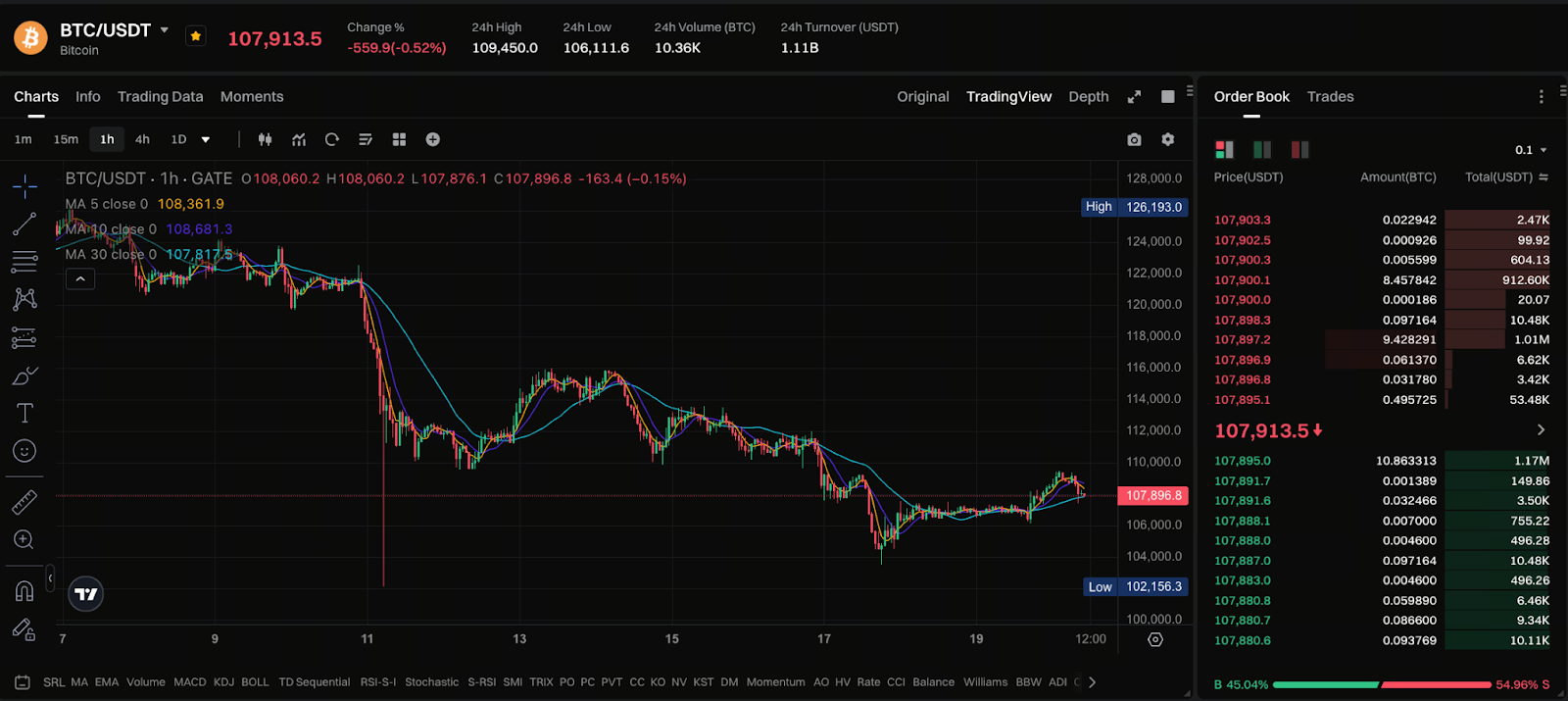Will Bitcoin Drop to $50,000 Again? The Final “Shakeout” Before the Bull Run Begins
Current Bitcoin Price and Market Overview

Chart: https://www.gate.com/trade/BTC_USDT
As of now, Bitcoin (BTC) is trading at approximately $108,134, with an intraday high of $109,469 and a low of $106,172. While Bitcoin has shown strong annual gains, recent momentum has slowed. Investors have shifted sentiment from excessive optimism to caution. Technically, Bitcoin has consolidated at elevated levels for several days. Short-term momentum is fading, and traders are taking profits. Typically, these signs suggest the market may be preparing for a corrective phase.
Why Do Analysts Favor a “Drop Before Rise” Scenario?
Veteran traders emphasize that for Bitcoin to break previous highs, a “final shakeout” is often needed. The main reasons are:
- Market Cycles: Historically, each bull market has followed a significant shakeout phase, as seen in the 2017 and 2020 cycles.
- Accumulated Leverage Risk: When many investors use leverage to chase prices at elevated levels, a downturn can trigger cascading liquidations and intensify the decline.
- Structural Support Zone: There is strong buying interest for Bitcoin around $50,000. If the price falls to this area, long-term capital usually enters the market.
In short, the current correction is not a negative development, but a necessary “washout” before the bull market resumes.
What Signals Could Indicate a Test of $50,000?
If Bitcoin drops to the $50,000 range, you may see the following market signals:
- The Fear and Greed Index plunges, and sentiment across the community turns pessimistic;
- Leveraged long positions in derivatives are liquidated, and open interest declines;
- Exchange outflows increase, while long-term holders resume accumulation;
- Technical charts form reversal patterns like a “double bottom” or “rounded bottom.”
These signals often arise when market sentiment is weakest—yet they frequently mean a bottom is forming.
How Should Retail Investors Respond?
For retail investors, the focus is on avoiding emotional trading:
- Phased Entry: As prices near $50,000, consider dollar-cost averaging or staged buying to avoid entering all at once.
- Stop-Loss Strategies: Short-term positions should have stop-losses just below major support levels to minimize potential losses from further declines.
- Watch Macro Factors: U.S. interest rate changes, ETF flows, and global risk appetite are crucial variables impacting Bitcoin’s price trajectory.
- Maintain a level-headed approach: Short-term volatility does not signal a trend reversal. Historically, false breakouts before bull runs often catch investors off guard.
Summary: Risk and Opportunity Go Hand in Hand
Bitcoin may be approaching a “healthy correction” that will set the stage for the next rally. Regardless of short-term market fluctuations, the long-term fundamentals remain solid. If the predicted correction to $50,000 materializes, analysts suggest this could mark the final low before the start of a new bull market.
Related Articles

2025 BTC Price Prediction: BTC Trend Forecast Based on Technical and Macroeconomic Data

Pi Coin Transaction Guide: How to Transfer to Gate.com

Flare Crypto Explained: What Is Flare Network and Why It Matters in 2025

How to Use a Crypto Whale Tracker: Top Tool Recommendation for 2025 to Follow Whale Moves

What is N2: An AI-Driven Layer 2 Solution
